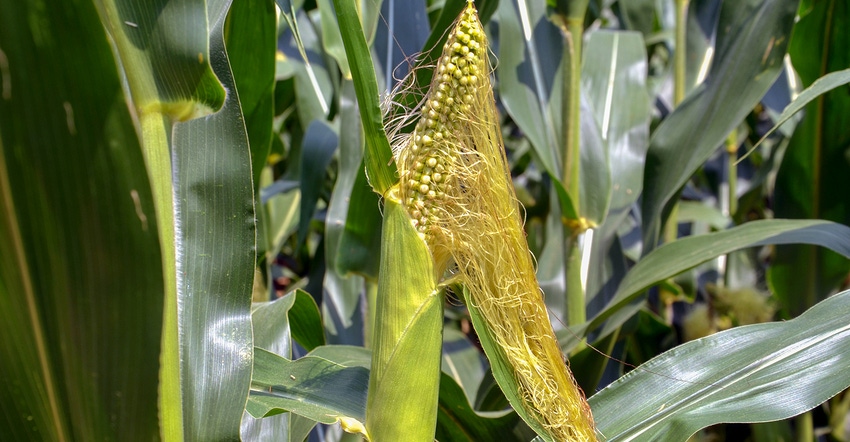
Dave Nanda stumbled onto a corn plant on an end row with no neighbors in any direction. The plant was hard to miss. It had two regular ears, a tiller with a regular-appearing ear and a tiller on the opposite side with an ear shooting out of the top. Was it a symptom of a disease?
“I don’t believe it’s a disease at all,” says Nanda, an independent crops consultant based in Indianapolis. “Instead, it’s an example of what corn plants will do to try to produce as many babies as possible.”
Soybeans are well known for their ability to compensate. Give a soybean plant the same amount of room as this corn plant, and it will grow a thick main stem with multiple branches. Given the right weather conditions, it can become a pod factory.
Corn doesn’t have that reputation for compensating for things like extra space due to missing plants. Yet Nanda says that doesn’t mean corn plants can’t adapt. It’s just tougher for corn plants to make up for missing plants because the seeding rate is much lower compared to soybeans in the first place.
Adaptation in action
Take a look at what this plant did (see photo below), Nanda says. He believes it sensed early that there were no other plants nearby. That signaled it to try to produce as much seed as possible. The process that allows a plant to sense a neighboring plant involves its ability to detect light rays in the red to far-red spectrum. The ratio of one type of light wave to another changes if a plant is shaded by a neighbor, Nanda says.
Corn plants do whatever it takes to produce as many viable seeds as possible. Even though hybrid corn won’t be kept for seed, the plant doesn’t know that, and assumes the progeny it produces will make the next generation.
Turn up the heat or shut off the faucet, and plants will pull back on the number of kernels they carry to maturity. Abortion of kernels in response to stress starts at the tip. The more severe the stress, the more blank cob you may find at the tip of ears, Nanda adds. The plant cuts back on kernels so it has a better chance of completing a reduced number of kernels rather than not being able to finish all kernels properly.
 MULTIPLE TILLERS, EARS: This is a full view of the plant that produced the sucker with an ear on top. Note it has two ears on the main stalk, plus another sucker, or tiller, with a regular ear.
MULTIPLE TILLERS, EARS: This is a full view of the plant that produced the sucker with an ear on top. Note it has two ears on the main stalk, plus another sucker, or tiller, with a regular ear.

Quest for more progeny
What happened with this plant with extra space was that it attempted to compensate and use the room to produce as many progeny as possible, Nanda says. First, it sent out tillers. One produced what appears to be a normal ear. The other shot an ear out the end of the tiller. Remaining silks indicate that the entire ear didn’t pollinate. However, it appears as if some kernels were fertilized and were developing.
Second, it sent out two ear shoots from the main stem. Both ears appear to be normal. Note that the ears are relatively long, especially compared to ears within a row of 30,000 to 35,000 plants per acre.
“There is a lesson to learn from this plant,” Nanda says. “Corn plants react to their environment. The goal is to provide an environment which helps each plant produce and fill as many kernels as possible.”
Corn Watch ’17 is sponsored by Seed Genetics-Direct, Washington Court House, Ohio.
About the Author(s)
You May Also Like




